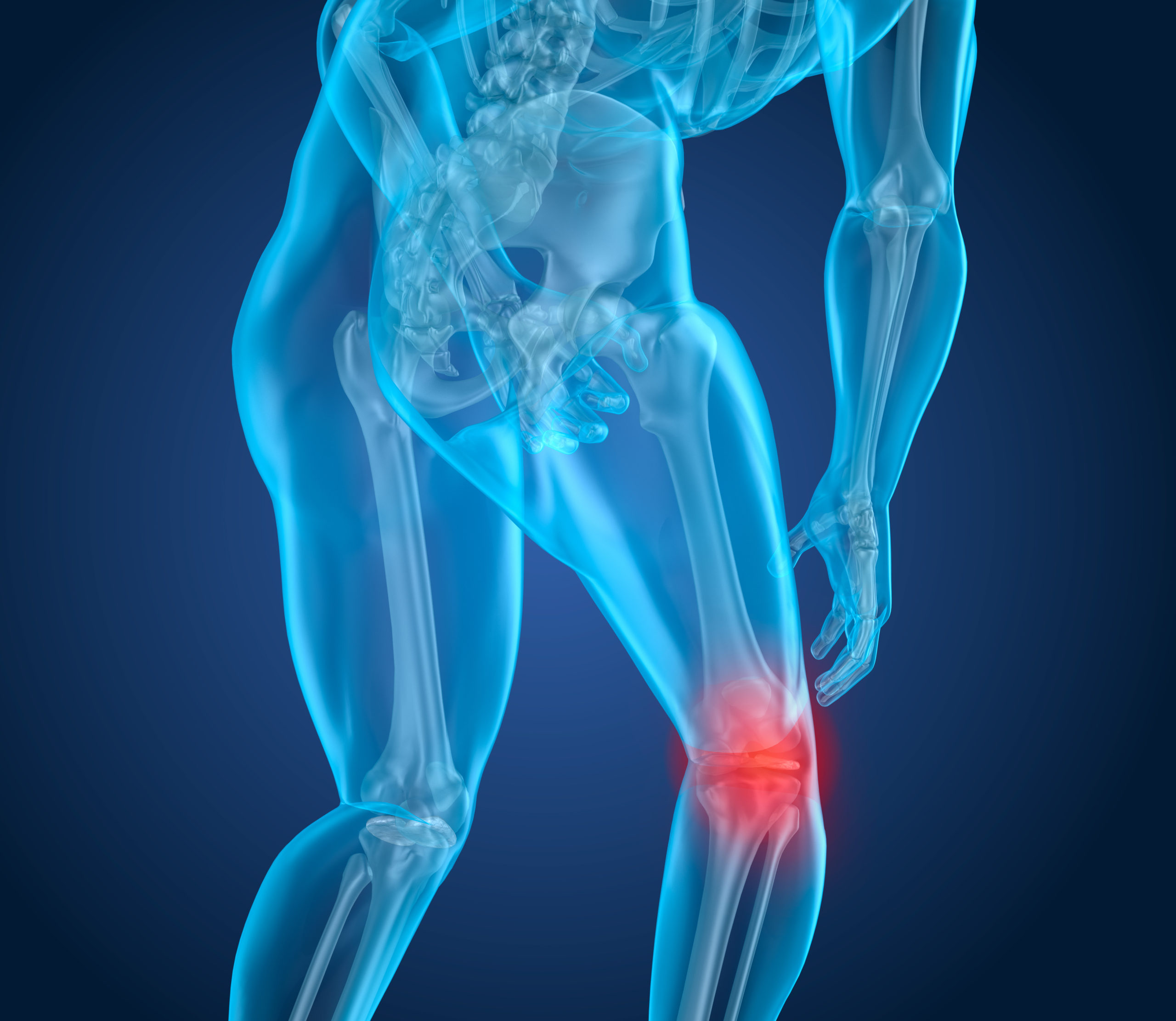
Arthritis is a joint disorder that involves the inflammation of one or more joints, accompanied by pain, stiffness, and swelling. Chronic inflammation, joint damage, loss of cartilage, and problems with synovial membranes become an issue as the condition progresses. There are over 100 different forms of arthritis, including the autoimmune form known as rheumatoid arthritis, although most can be classified as autoimmune in nature. Gout is another form of arthritis where acid accumulates and gets deposited in the extremities in crystal form, which can be extremely painful.
The most common form of the disease is osteoarthritis, which is most often a result of injury to the joint, daily wear and tear, and/or aging. Arthritis can be debilitating, keeping you from participating in many, if not all recreational activities, depending on its progression. It can also drain your energy, vibrancy, and sense of well-being, leaving you in a constant state of pain, fatigue, and frustration. Latent tissue acidosis can result when lactic and uric acids build up from tight, unstretched, low circulating muscles, and poor cellular metabolism. These tight muscles can also PULL on the joints causing inflammation and acid accumulation. Pharmaceutical drugs can also generate more acid and damage. Tylenol and NSAIDS are known to impair proteoglycan (building block of cartilage), destroying the joint cartilage over time!
Even though the body produces uric acid as a byproduct of a healthy metabolism and acts to increase the antioxidant capacity of the blood when at normal levels, it must not be over-produced, or problems will arise. This powerful acid can build up in the system resulting from poor pro-inflammatory diets, unhealthy lifestyle habits, and environmental toxic buildup. Uric acid has a tendency to buildup in extremities, like in the big toe, but certainly is NOT limited to that area. This is a protective mechanism your body employs to keep acids out of the blood and away from vital organs. The acids can then get deposited into the joints, especially the weaker ones, and crystalize over time. SEE CRYSTAL ARTHRITIS SECTION.
Being that blood flow to the joints is limited, the immune cells are not as easily accessible in those areas, making normal debris cleanup impossible. This now becomes a safe-haven for other toxins, bacteria, and calcium deposits. Additionally, nanobacteria are able to form calcium shells to hide from the immune system, surfacing sporadically and initiating a reoccurring inflammatory immune response. Foreign proteins-food allergens can also confuse the immune system into attacking the joints. This acid-toxin accumulation can be HIGHLY damaging over time, resulting in more inflammation and free radical activity. As mentioned, this can cause extensive damage and depletion of collagen (a constituent of cartilage, ligaments, tendons, synovial fluid, and joints) and synovial fluid, compromising it’s cushioning and protective functions.
Accumulating acids prevent a healing response from taking place in the joints, further accelerating the inflammation and free radical activity, leading to a chronic situation. The immune system continues to be over-stimulated, leaving you more susceptible to other degenerative ailments when the immune system is overworked. This can potentially cause permanent damage, like bone on bone or dissolved tendons, leaving surgery as an only option. However, surgery doesn’t always help and oftentimes makes the problem even worse. Enacting a pH balancing diet and lifestyle along with proper supplementation can alleviate symptoms and allow the body to reverse the condition in most cases!
Over the years, researchers have observed the relationship between acidic states and inflammation in the joints.
A study published by The American Journal of Medicine as far back as 1970 analyzed the synovial fluids from thirty patients with arthritis. It was seen that patients with joint disease had low pH levels, but those with severe joint disease had large decreases in pH and large increases in lactate.” (1)
A study published by Arthritis & Rheumatism back in 1971, examined samples from knee joints of 44 patients with diverse joint diseases. They found that lower pH values correlated with poor pO2 (amount of oxygen in the blood) and lactate (lactic acid) values, which are found generally in fluids of the inflammatory type. The studies showed that those with diseased synovial fluids or joint conditions had lower pH levels, not enough oxygen in the area, and higher lactate concentration (acidity) in their body. (2)
And in more recent studies……….
In this very informative 2008 study from Institute for Prevention and Nutrition (Germany) researchers provide viable evidence that supplementing with alkaline minerals reduced pain and increased mobility in patients with moderately active Rheumatoid Arthritis over a 12-week period. (3)
Many other scientists have correlated arthritis with an acidic pH. Dr. William Lee Cowden, a well-known cardiologist skilled in nutrition, homeopathy, and integrative medicine, believes that high acidity pulls calcium from bones to neutralize the acid. Then, this calcium gets deposited as calcium-acid salts in the joints and leads to degenerative arthritis.
According to Dr. Robert Young, author of the best-selling book the pH Miracle, “Pain cannot exist without acidity and acidity cannot be present without pain.” Therefore, through the detoxification and re-alkalization of the body, pH levels can be balanced, to regain control of the inflammatory response, alleviate the aches and pains, and allow healing to take place so you can enjoy life once again!
1-Falchuk, K. H., Goetzl, E. J., & Kulka, J. P. (1970). Respiratory gases of synovial fluids: an approach to synovial tissue circulatory-metabolic imbalance in rheumatoid arthritis. The American journal of medicine, 49(2), 223-231.
2-Treuhaft, P. S., & McCarty, D. J. (1971). Synovial fluid pH, lactate, oxygen and carbon dioxide partial pressure in various joint diseases. Arthritis & Rheumatism, 14(4), 475-484.
3- Regina Maria Cseuz, Istvan Barna, Tamas Bender, Jurgen Vormann
(2008) Alkaline Mineral Supplementation Decreases Pain in
Rheumatoid Arthri-tis Patients: A Pilot Study 2: 100-105.
http://medcraveonline.com/IJCAM/IJCAM-04-00116.pdf
Stock illustration ID:854378788 -Arthritis
